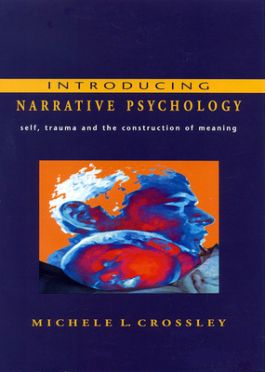Introducing Narrative Psychology
1st Edition
033520290X
·
9780335202904
© 2000 | Published: February 16, 2000
* What is narrative psychology?* How is the experience of 'self' linked to language, narratives and other people?* What is the role of time, morality, power and control in the construction of identity?This introductory textbook presents a coherent ov…
Read More
Request Review Copy
Receive via shipping:
- Colour, print bound version of the complete text
Acknowledgements
Preface
Explanatory note on further reading
Preface
Explanatory note on further reading
/f002Section One: Theories and methods
Theories of self and identity
Discursive methods and the study of the self
Narrative
living and being in time
/f002Section Two: Applying methods
Preface to section two
Doing a narrative analysis
Analysis and writing up the project
/f002Section Three: Contemporary applications
Preface to section three
Surviving childhood sexual abuse
Terminal illness
living with a long-term HIV positive diagnosis
Contemporary ways of making meaning
Concluding synopsis
Bibliography
Index.
* What is narrative psychology?
* How is the experience of 'self' linked to language, narratives and other people?
* What is the role of time, morality, power and control in the construction of identity?
This introductory textbook presents a coherent overview of the theory, methodology and potential application of narrative psychological approaches. It compares narrative psychology with other social constructionist approaches and argues that the experience of self only takes on meaning through specific linguistic, historical and social structures. The author shows how the choice of one narrative over another - for example arising out of dominant narrative structures of power and control - can have serious social and psychological implications for the construction of images of self, responsibility, blame and morality.
Theoretical approaches are introduced and an overview of methods is provided, encouraging individuals to apply these theories to their own autobiographies. Such theories are further illustrated with case-study material drawing on physical illness (HIV infection) and childhood sexual abuse. Each of these issues is examined in a way which demonstrates how different contemporary narratives and discourses are used to construct meaning and a sense of coherent identity in the face of traumatic events which break down temporal coherence and order. Taken as a whole, this book represents essential reading for students and researchers interested in narrative psychology.
* How is the experience of 'self' linked to language, narratives and other people?
* What is the role of time, morality, power and control in the construction of identity?
This introductory textbook presents a coherent overview of the theory, methodology and potential application of narrative psychological approaches. It compares narrative psychology with other social constructionist approaches and argues that the experience of self only takes on meaning through specific linguistic, historical and social structures. The author shows how the choice of one narrative over another - for example arising out of dominant narrative structures of power and control - can have serious social and psychological implications for the construction of images of self, responsibility, blame and morality.
Theoretical approaches are introduced and an overview of methods is provided, encouraging individuals to apply these theories to their own autobiographies. Such theories are further illustrated with case-study material drawing on physical illness (HIV infection) and childhood sexual abuse. Each of these issues is examined in a way which demonstrates how different contemporary narratives and discourses are used to construct meaning and a sense of coherent identity in the face of traumatic events which break down temporal coherence and order. Taken as a whole, this book represents essential reading for students and researchers interested in narrative psychology.

